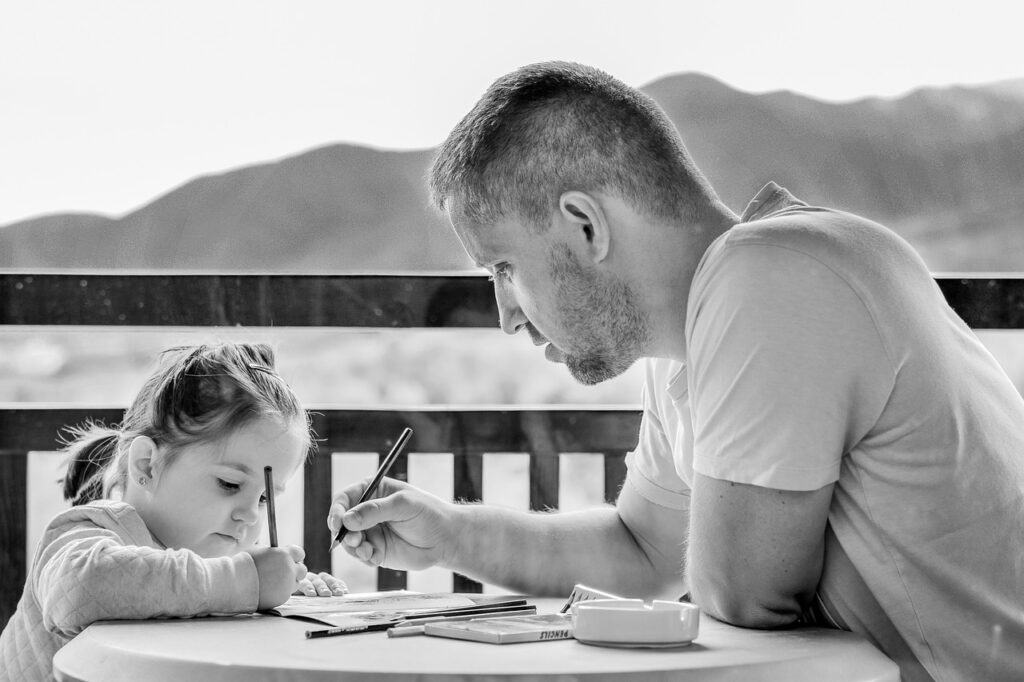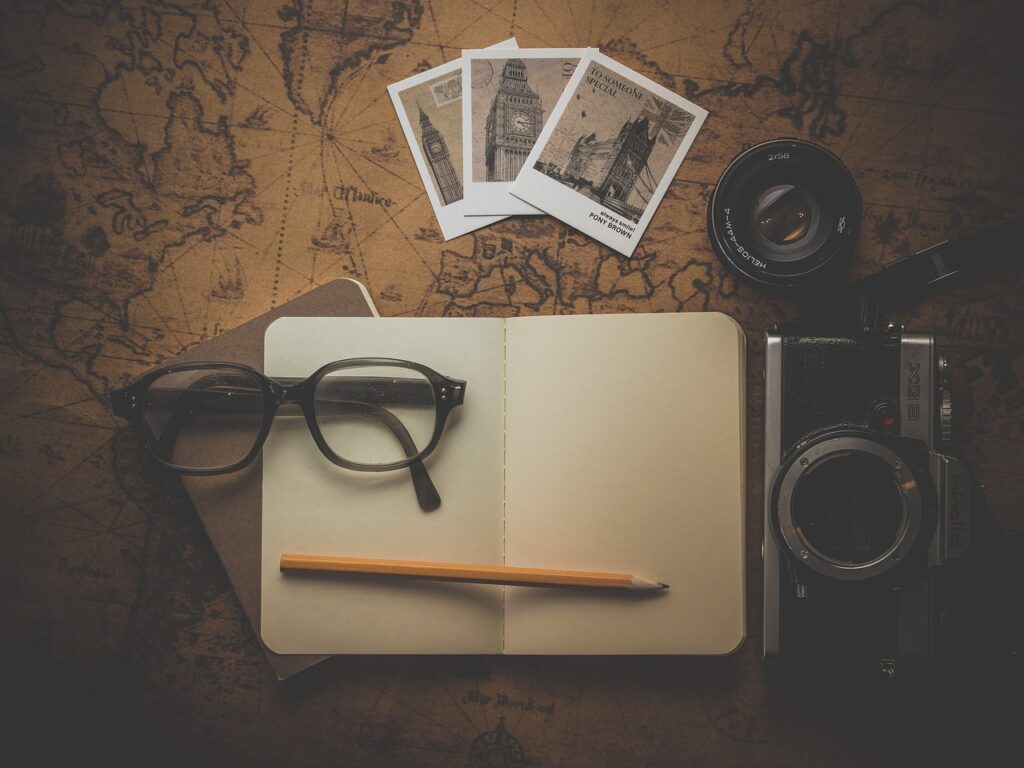Getting Started with Roadschooling
Embarking on the roadschooling journey is like stepping into a storybook where every page turn unveils a new adventure, and your child is the main character! Imagine your child learning history not from dusty textbooks but from the ancient ruins themselves, or understanding biology by snorkeling through vibrant coral reefs. This isn’t just education; it’s living learning. Let’s dive into how you can start this thrilling chapter of your child’s life, blending the freedom of travel with the richness of education.
Step 1: Embrace the Adventure Mindset
First things first, swap the classroom mindset for an adventurer’s spirit. Roadschooling: Travelling with a family isn’t about replicating school in a different setting; it’s about seeing the world as an open classroom. Whether it’s the art of negotiating at local markets or understanding the physics of a swinging bridge, learning opportunities are everywhere. Start by brainstorming places that excite your child and align with your family’s educational goals. Remember, the best lessons aren’t planned; they happen spontaneously.
Step 2: Legalities and Logistics
Before you pack your bags, a bit of groundwork is essential. Check the homeschooling laws of your home country and how they translate on the road. Some places are as easy-going as a beach hammock, while others are as tight as a zip line harness. You might need to register your child as a homeschooler or keep records of their educational journey. Also, consider how you’ll balance travel logistics with learning moments. Will you have themed learning weeks based on your destinations, or take it day by day? Flexibility is your best friend on this journey.
Step 3: Gathering Your Roadschooling Toolkit
Your toolkit won’t need a protractor or a glue stick, but it should include a mix of digital resources, real-world experiences, and a dash of creativity. Equip yourself with apps and platforms that offer learning on the go, like Duolingo for languages or StoryTimeABC for English & Financial literacy or Khan Academy for just about everything else. But remember, the world outside your door is the real toolkit. Local museums, historical sites, and even the natural environment are your child’s learning materials. And don’t forget to have them document their journey—blogs, photo diaries, or even a simple journal can be powerful learning tools.
Click Here for StoryTimeABC website!!
Making Connections Count
One of the hidden gems of roadschooling is the community you’ll build along the way. From fellow traveling families to locals you meet in your travels, each person has a story and knowledge to share. Learning how to weave these connections into your child’s educational fabric can turn a simple conversation into a lesson in culture, language, or history. Engage with local communities, join online roadschooling groups, and never underestimate the power of a shared meal with new friends.
The Classroom Without Walls

Imagine geography lessons where you’re not just tracing maps but tracing the sands of deserts, the currents of oceans, and the trails of ancient forests. Science classes come alive in the vast laboratory of the world, from the laws of physics on display in a game of soccer with new friends to biology lessons in the Amazon rainforest. Each destination offers a unique curriculum, tailored by the most creative teacher: life itself.
Learning to Pivot
Flexibility isn’t just a physical skill for yoga; it’s a critical component of your family’s roadschooling philosophy. Be ready to adapt your plans based on opportunities or challenges that arise. Maybe a festival in a small town offers a deep dive into local culture, or a sudden transportation strike turns into a lesson in patience and problem-solving. Every twist in the road is a chance to learn and grow.
Roadschooling: Travelling with a family is more than an educational choice; it’s a lifestyle that embraces curiosity, adaptability, and the joy of discovery. It’s about showing your children that the world is vast, diverse, and infinitely fascinating, and that learning isn’t confined to the four walls of a classroom. As you and your family embark on this journey, remember that the goal isn’t just to cover a curriculum but to instill a lifelong love of learning. So, pack your bags, your books, and most importantly, your sense of adventure, and prepare to turn the whole world into your classroom.
Planning Your Educational Journey
Setting sail on the roadschooling journey is like plotting a course for an epic treasure hunt where the X marks not just a spot on the map but a milestone in your family’s educational adventure. Planning your child’s educational journey requires a compass of curiosity and a map drawn with interests and learning goals. Let’s sketch out the route to a successful roadschooling adventure, ensuring your travels are not just a journey but a rich, educational odyssey.
Charting the Course: Setting Goals

Before you hit the road, take a moment to chart your course. What are your destinations not just on the map, but in learning? Are you aiming to dive into the history of ancient civilizations, explore the wonders of natural science, or perhaps master a new language? Having your child set clear, flexible learning goals gives their journey direction. Remember, roadschooling: Travelling with a family is about more than just seeing new places; it’s about discovering new perspectives and understanding the world in a way that textbooks just can’t offer.
Packing Your Educational Toolkit
Just as you wouldn’t set off on a voyage without packing essentials, you need to pack your educational toolkit with care. This toolkit stretches beyond traditional school supplies to include apps, games, and resources that make learning fun and accessible on the go. Incorporate a mix of tech-based tools like educational apps and hands-on materials like journals, sketchbooks, local crafts , and a tablet. This blend ensures that whether you’re under the Northern Lights or navigating the streets of Tokyo, your child’s learning continues uninterrupted.
Navigating the Local Learning Landscape
The beauty of roadschooling lies in using the world as your classroom. Each destination offers unique educational opportunities, so plan to dive into the local learning landscape. Whether it’s a cooking class in Italy to understand fractions (and make delicious pizza!), a guided hike in the Rockies for a lesson in geology, or a storytelling session in Ghana to grasp the intricacies of oral history, each experience enriches your child’s understanding of the world. Tailor your travel plans to include these local learning experiences, and watch as education comes alive.
Flexibility: The Wind in Your Sails
If there’s one thing seasoned travelers know, it’s that the best-laid plans often change. The same goes for roadschooling. Be prepared to adjust your plans based on opportunities that arise or challenges you encounter. Maybe a local festival offers an unplanned deep dive into cultural studies, or a rainy day leads to an impromptu science lesson on weather patterns. Embrace these moments with flexibility and creativity, turning potential disruptions into valuable learning experiences.
Keeping a Captain’s Log
Documenting your journey is a crucial part of the learning experience. Encourage your kids to keep a travel journal or a blog to reflect on what they’ve learned, the places they’ve visited, and the people they’ve met. This not only reinforces their learning but also creates a precious keepsake of your family’s adventure. Photos, sketches, and collected mementos can add color and context to their entries, making each page a vivid chapter of their educational journey.
For those Captains that are interested in teaching their child how to create and run a WordPress website click here: StoryTimeABC
Joining Forces with Fellow Travelers
Roadschooling doesn’t mean going it alone. Along the way, you’ll meet many families on similar journeys. Connect with these fellow travelers to share experiences, swap tips, and maybe even collaborate on learning projects. Online communities and social media groups can be invaluable resources, offering support, advice, and friendship. These connections enrich the roadschooling experience, providing both kids and adults with a broader community of learners and adventurers.
Embarking on a roadschooling adventure is an exciting, challenging, and infinitely rewarding experience. It’s about more than just travel; it’s about crafting a personalized educational journey that ignites curiosity, fosters growth, and brings learning to life in ways you never imagined. So grab your maps, pack your bags, and set off on a voyage of discovery. The world is waiting to teach your family its secrets, one destination at a time.
Essential Tools for Learning on the Go
Embarking on the roadschooling journey means transforming every stop into a classroom bursting with new lessons. But to keep this educational adventure on track, you’ll need some essential tools in your travel kit. These aren’t just physical items but resources and platforms that bridge gaps in learning, especially those overlooked areas not fully addressed by the standard curriculum.
Digital Library: Books in Your Backpack
First up, an e-reader loaded with a diverse library ensures your child’s reading journey continues uninterrupted. It’s like having a magical backpack that holds thousands of books without the weight. Imagine exploring the classics, the latest educational materials, and interactive stories that leap off the screen, all in one place. For families following a British curriculum, or anyone interested in enriching their child’s literary world, Cambridge English offers traditional English materials that blend seamlessly into your roadschooling adventures. This balance of classic and contemporary reading material not only enriches your child’s understanding and appreciation of literature and language but also keeps them engaged and curious, no matter where your travels take you.
Adding to the treasure trove of resources, there’s a YouTube channel that breathes new life into stories from ancient Greece by giving them a modern twist. The creators don’t just stop at storytelling; they offer group lessons that empower students to craft alternative endings, honing their reading, comprehension, and writing skills. It’s an innovative approach to learning that makes each child an active participant in the storytelling process. If your child’s story is selected, it gets woven into the original narrative and showcased on YouTube, where they receive credit. This unique opportunity allows them to share their creative achievements with friends and family, giving them a sense of pride and accomplishment. It’s a fantastic way to make learning interactive, fun, and rewarding, transforming passive listeners into imaginative storytellers ready to explore the vast realms of their creativity.
Online Learning Platforms: Your Virtual Classroom
In today’s digital age, the world is your classroom—thanks to online learning platforms. Websites like Khan Academy and Coursera offer courses across various subjects. However, for lessons that cater to gaps in the American curriculum, such as financial literacy, coding, and advanced reading and writing, StoryTimeABC stands out. It’s a beacon for traveling families, offering specialized courses that prepare kids for real-world challenges. Imagine sitting in a café in Paris while your child learns coding or understanding the nuances of financial literacy while lounging by a beach in Bali. With StoryTimeABC, learning is as boundless as your travel itinerary.
Interactive Apps: Fun at Your Fingertips
Who said learning can’t be fun? Interactive educational apps turn tedious topics into engaging challenges. Whether it’s mastering a new language with Duolingo or exploring the stars with Star Walk, these apps make learning accessible and entertaining. They’re perfect companions for long travel days or quiet evenings at your accommodation. Plus, many of these apps offer offline options, so learning never has to pause, even in the most remote destinations.
The Power of Notebooks: Sketches and Scribbles

Never underestimate the power of a good old-fashioned notebook. It’s a versatile tool for jotting down observations, sketching landmarks, or practicing writing. Encourage your kids to document their travels, from the food they tried to the new words they learned. This not only enhances their writing skills but also creates a priceless keepsake of their roadschooling journey.
Connectivity Tools: Staying Plugged In
In the digital age, a reliable tablet or laptop and a sturdy internet connection are non-negotiable for roadschooling families. These tools ensure that your child stays plugged into their online courses, submits assignments on time, and participates in virtual classrooms. They also make it easier for parents to download new learning materials, connect with fellow roadschooling families, and seek support from online communities.
The Community: Learning from Each Other
Finally, the roadschooling community itself is an invaluable tool. Through forums, social media groups, and meet-ups, families share experiences, advice, and resources. This network provides a support system that can help navigate the challenges of education on the road. Whether you’re looking for curriculum ideas or tips on integrating travel into your lessons, the community has your back.
Equipped with these essential tools, roadschooling families can ensure that education doesn’t just continue on the road—it thrives. From digital resources like StoryTimeABC to the tangible pages of a notebook, each tool plays a part in crafting an educational experience as rich and varied as the world itself. So pack your bags, grab your gadgets, and set out on an educational adventure where learning knows no bounds.
Balancing Travel and Education

I’m here to guide you through the art of balancing the thrilling adventure of travel with the enriching journey of education. It’s like mixing your favorite smoothie; you need the right balance of flavors to make it perfect. Let’s dive into making this blend as delightful as possible, drawing inspiration from the journey of roadschooling families.
Find the Sweet Spot: Routine vs. Adventure
Creating a routine doesn’t mean scheduling every minute but finding a rhythm that includes both study and exploration. Think of it as planning a treasure hunt where the map includes both hidden gems and learning spots. Maybe mornings are for exploring ancient ruins or science museums, and afternoons are for unwinding with a good book or an online lesson. This way, every day is a new adventure, but the quest for knowledge continues.
Flexibility is Key
The beauty of roadschooling is its flexibility. Imagine learning about marine biology not from a textbook, but by snorkeling in the Great Barrier Reef. Or understanding geometry by measuring the angles of the Pyramids. When travel plans change (as they often do), see it as an opportunity to discover new learning experiences. Maybe a rainy day means a deep dive into coding games or an impromptu history lesson at a local museum. Being open to change turns every unexpected turn into a learning opportunity.
Utilizing Resources: Making the World Your Classroom
The world is brimming with educational resources, from the vast collections of the British Museum to the natural wonders of the Grand Canyon. Each destination offers unique lessons waiting to be discovered. Incorporate local libraries, museums, and historical sites into your curriculum. And don’t forget digital resources; platforms like StoryTimeABC offer courses that enrich the curriculum with financial literacy, coding, and advanced reading and writing, making learning relevant and fun.
Learning Together as a Family
Roadschooling isn’t just for the kids; it’s a family journey. Engage in learning activities together. Maybe it’s a cooking class in Italy to understand fractions (and make delicious pizza), or a family blog project to enhance writing skills. Sharing these experiences not only strengthens family bonds but also models a lifelong love of learning.
Embrace the Local Culture
Immersing in local cultures provides invaluable lessons in geography, history, language, and sociology. Participate in local festivals, try traditional foods, and engage with the community. These experiences teach empathy, cultural appreciation, and adaptability—lessons that are difficult to convey through books alone.
Documenting the Journey
Keep a travel journal or blog to document your adventures and what you’ve learned. This not only serves as a wonderful keepsake but also reinforces writing, storytelling, and reflection skills. Encourage your kids to add drawings, photos, and souvenirs to their journals, making each page a chapter of their unique educational journey.
Staying Connected
Join online roadschooling communities to connect with other traveling families. These platforms are treasure troves of advice, support, and resources. Share your experiences and learn from others who are on similar paths. It’s comforting to know you’re part of a global community of adventurous learners.
Balancing travel and education is like conducting an orchestra; each element plays a crucial part in creating a harmonious experience. With a bit of planning, flexibility, and creativity, roadschooling can transform the world into a vibrant classroom, making every day an opportunity to learn something new. So pack your bags, grab your curiosity, and embark on a journey where education meets adventure, and every destination is a lesson waiting to be learned.
